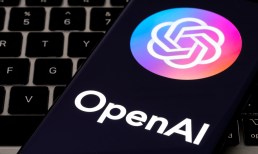Worlds are colliding when it comes to payments and commerce. One of the most recent examples of that movement comes from Walmart, the venerable retail chain locked in mortal combat with Amazon, and Green Dot, the 20-year-old payment services provider that has managed to not only survive in a cutthroat industry, but innovate and thrive.
The two companies already have a payments partnership, one that involves Walmart MoneyCard program and which launched in 2006. But news broke late Tuesday afternoon (Oct. 29) that the relationship has gotten deeper. Not only is that payments deal being extended — a sign of how FinTech is starting to play ever more closely with retail — but the two businesses will create and launch a FinTech accelerator. These two developments foreshadow future changes to come in 2020s for retail and FinTech, Daniel Eckert, senior vice president of Walmart Services and Digital Acceleration told Karen Webster shortly before the news broke.
“The next big thing in retail is the integration of FinTech and retail tech,” he said. “In order to deliver something like that, you’ll have to get a lot closer to others.” That means, for instance, more cooperation and collaboration around such things as application programming interfaces (APIs), and more effort when it comes to accelerators, among other tasks.
Omnichannel Power
Let’s get into the accelerator part of this first.
This new Walmart-Green Dot joint venture will go by the moniker TailFin Labs. Its FinTech-focused charge is to, according to both companies, create new products, services and technologies that hit both shopping and consumer financial services. Indeed, to hear Eckert tell it, the joint effort will speak to shift consumer preferences and expectations. In a general sense, accelerator efforts will reflect the mingling of various consumer tasks — mass merchants have branched out into expanded services, including, in Walmart’s case, healthcare. Digital wallets, payments and financial services capabilities are part of that deepening mix.
Advertisement: Scroll to Continue
“The next megatrend is more integration,” he said. One big reason? “Consumers are time-starved.” The challenge presented to accelerator participants will be in coming up with more omnichannel tools that take into account both retail and financial services functions. Indeed, that’s a challenge faced throughout all retail, though Walmart, given its size and resources, would seem to have an advantage in this area.
Eckert also provided a more specific, potentially near-term example — one that involves the MoneyCard powered by Green Dot.
First, a little bit about how the Walmart MoneyCard program works. It features cash-back rewards for Walmart purchases, enables direct deposit and a 2-day advance on earnings deposited there, online bill pay and other benefits. There is also a feature called the Vault. Customers with a Walmart MoneyCard can put up to $500 in a virtual Vault for safekeeping. Once the money is in the Vault, each dollar earns an entry for one of 1,000 cash prizes every month (one grand prize of $1,000 and 999 $25 prizes), Walmart has said. When customers use the Walmart MoneyCard Vault, their savings increase by 35 percent on average, and they have seen a 274 percent usage increase since Vault was announced more than two years ago.
Now imagine that a person uses the Walmart mobile app and her Walmart MoneyCard to plan out a shopping list before visiting one of those stores. FinTech and retail tech could be integrated so that she can make that list and also learn how much each item will cost with her shopping budget linked to that MoneyCard account updating in real time to reflect the planned purchases. As well, such tech — that is, the marriage of FinTech and retail technology — could help her manage her spending as she plans those lists and even shops inside Walmart stores. The app could also keep memory of what she might have bought at the same point the year before, giving other shopping options and otherwise providing more information and transparency — and incentive to shop at Walmart.
“Those things could not be done before because the tech was not built in such a way to allow seamless continuity,” he told Webster. For now, though, the focus is getting this accelerator effort off the ground — Walmart will hold the majority stake in that operation — and getting more consumers to sign up for Walmart MoneyCard accounts. “We’ve not had detailed discussion with Green Dot about where the road map is going,” Eckert said.
Retail FinTech Trends
The two companies might have not their exact road map. But PYMNTS research has certainly dug deep into recent FinTech and retail technology trends — and what consumers going into the new decade want from their apps and app experiences.
In fact, in June 2019, a PYMNTS study of 1,037 U.S. consumers, a representative sample of the mobile-using public, found that consumers access one of more than 44 different apps the very first thing when they wake up every day across those different categories — from email to their calendar to mobile banking, social media, shopping and messaging apps. When asked which app consumers first look at when they wake up in the morning, it was either a social media app like Facebook (or Instagram if they are millennials) or text/email to organize and plan their days.
Those apps, however, largely compartmentalize access to everyday activities. It has become more convenient to check how much money is in a consumer’s checking account via a banking app, find what they might want to buy, then determine whether their favorite retailer has the item available for in-store pickup and how long it might take to drive to the store to pick it up after ordering online. That would seem to bolster the case for this Walmart-Green Dot joint accelerator — and lend credence to how Eckert described the possible coming attractions from that operation.
Just about a third of the consumers we studied expressed a strong interest in the “app of apps” concept, with 11 percent (10.9 percent) expressing an extremely strong interest. Only 13 percent of the consumers said thanks, but no thanks. The majority, 54.4 percent, were on the fence — they were a little or somewhat interested in having a single app as the gateway to a more streamlined interaction with the many apps they use every day.
Walmart is certainly a part of this trend — or, at the least, figures in consumer preferences. Brand familiarity is important, as it can spark a vital sense of app security and reliability. Walmart, according to that study, is part of that list, along with Google , Amazon, Apple, and PayPal.
Another point in favor of the deepening relationships between retailers and financial services comes from another PYMNTS research report, this one titled The Where Will We Bank Next Survey?, which happens to be a Green Dot collaboration. That research found that 57.5 percent of consumers surveyed for the report are indeed interested in banking with companies that are not financial institutions. Even so, the challenges are still significant, as traditional banks and credit unions still retain massive amounts of trust among consumers, who, in any case, are often reluctant to go through the trouble of moving over bills and accounts to new FIs. Yet, some 42 percent of consumers view Walmart as their favorite brand. Indeed, 28.9 percent of consumers said they trust Walmart enough to bank with the chain — that compares 30.1 percent for Amazon, 19.4 percent for Target and 14.5 percent for Uber.
Extended Relationship
The relationship between Walmart and Green Dot also just got some other new life in Tuesday — and that brings us to the second part of the deal that was announced late Tuesday afternoon. The two companies have extended their MoneyCard program for another seven years. Green Dot will continue as the issuing bank and program manager for the program.
FinTech and retail tech — excuse the overly poetic image to come — are almost like two dancers swirling toward each other. The challenge, one taken head-on by TailFin, is for retail and FinTech to learn that choreography — and avoid stepping on each other toes.
“If you don’t have an accelerator moment, it won’t be brought to life,” Eckert said.



